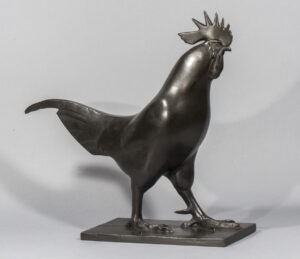Charles ARTUS
(1897-1978)
Born in Etretat in 1897, Charles Artus settled in Paris where he entered the workshop of the sculptor and animal painter, Edouard Navellier (1865-1944). Although the latter kept in his garden a menagerie of animals from Europe, he encouraged the young artist to further seek for his models at the Jardin des Plantes and passed on to him his liking for nature observation and precision in anatomical study. Artus later refined this technique under François Pompon (1855-1933) whose assistant he was for many years. After setting up his own workshop rue de Vaugirard, he gave up his former naturalistic approach and became more interested in the overall volume of his models and in the stylisation of forms. During the 1920s, he exhibited at the Salon des Artistes Français, where he was awarded the bronze medal in 1926, and of which he later became Perpetual Secretary.
In 1931, he was among other artists such as Paul Jouve (1878-1973) and Georges Guyot (1885-1973) one of the founding members of the Groupe des Douze, created by François Pompon and Jane Poupelet after the dissolution of the Société des Artistes animaliers. Many of his works are held by major private or museum collections such as the Musée d’Art Moderne de Paris or the Metropolitan Museum of Art.

